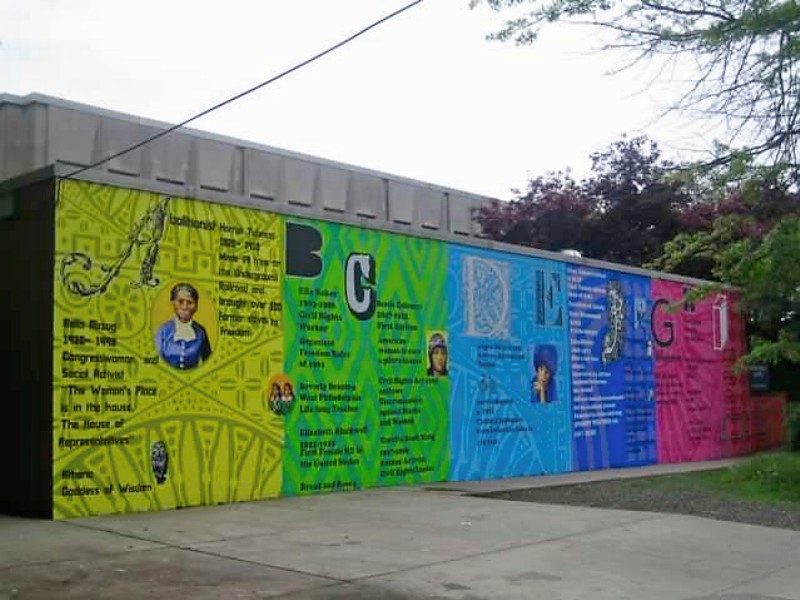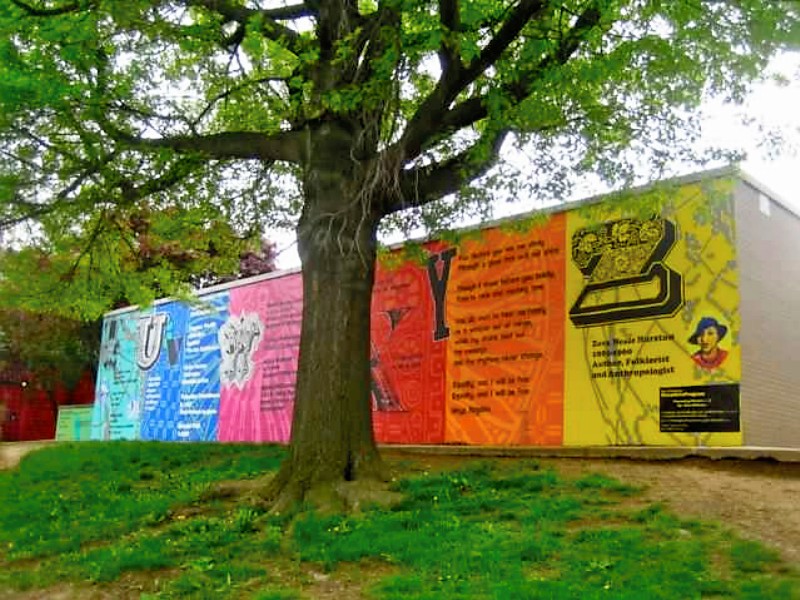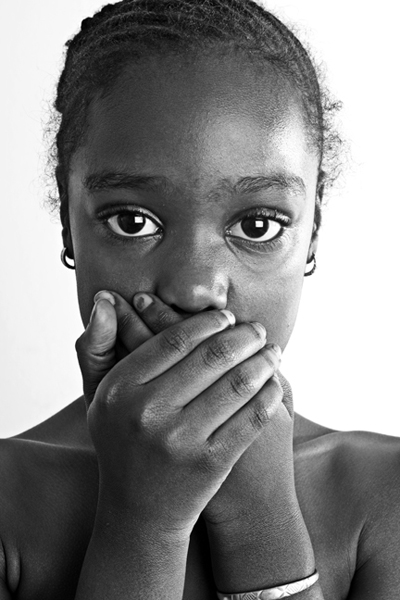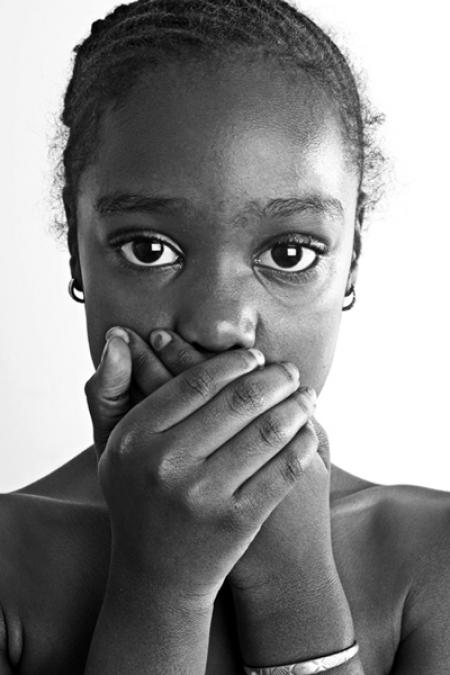Serendip is an independent site partnering with faculty at multiple colleges and universities around the world. Happy exploring!
Walled Women



POST YOUR THOUGHTS HERE
Welcome to the on-line conversation for Women in Walled Communities, a cluster of three courses in a new 360° @ Bryn Mawr College that focuses on the constraints and agency of individual actors in the institutional settings of women's colleges and prisons.
This is an interestingly different kind of place for writing, and may take some getting used to. The first thing to keep in mind is that it's not a site for "formal writing" or "finished thoughts." It's a place for thoughts-in-progress, for what you're thinking (whether you know it or not) on your way to what you think next. Imagine that you're just talking to some people you've met. This is a "conversation" place, a place to find out what you're thinking yourself, and what other people are thinking. The idea here is that your "thoughts in progress" can help others with their thinking, and theirs can help you with yours.
Who are you writing for? Primarily for yourself, and for others in our cluster. But also for the world. This is a "public" forum, so people anywhere on the web might look in. You're writing for yourself, for others in the class, AND for others you might or might not know. So, your thoughts in progress can contribute to the thoughts in progress of LOTS of people. The web is giving increasing reality to the idea that there can actually evolve a world community, and you're part of helping to bring that about. We're glad to have you along, and hope you come to both enjoy and value our shared explorations. Feel free to comment on any post below, or to POST YOUR THOUGHTS HERE.

My voice?
In her piece, Alison Cook-Sather references Khamler (2003) and Gilbert (1989) who suggest that the term "student voice" might not be the appropriate term to use in reference to the "desire for student engagement,

The gap between what it taught and what is learnt
I find it very interesting that, in regards to voice in education, we've read two pieces by women who have backgrounds in film. Ellsworth's work, Teaching Positions, brought to light the true organic nature of teaching in that it is impossible to know what will arise from the act of giving a lesson. Thinking back on classes I've taken with Anne and Jody, I've realized that I rarely left the classroom having learnt what I expected to learn at the beginning. Teaching and learning, it seems, are not necessarily directly related. Teachers have no guarantee of knowing what will be learnt by the students they teach, and that is because each learner has different experiences which allow them to learn and process the classroom curriculum differently – deciding for themselves what is important. Instead, Ellsworth notes, it is perhaps the gap in what is being taught and what has been "learned" ("a surprising 'return of difference'") that points to true learning. This student-centric view reaffirms the idea that what the student takes from a lesson is perhaps more important than the lesson itself. This, for me, harkens back to Deveare-Smith's idea of the informative nature of the "gaps" while performing others.

A truly shocking moment
I really enjoyed our class today--getting to discuss these different terms, on our own terms, is something that I think is incredibly important, especially in a class with as much subjectivity and nuance as our own. I really enjoyed hearing from other students about their experiences that intersected with these topics from Pratt's and Cook-Sather's essay. It's an opportunity to hear and cherish the so-called "student voice" in a way that feels very genuine, and to really discuss social issues that I feel are too often otherized and glossed over in many other social science classes.

Sept112012 S2: Movement & Voice
After reading Elizabeth Ellsworth's introduction, I got stuck on how much the word and concept of movement seems to be a recurring theme in the readings we've been doing.
To bring up the comparison between Smith and Ellsworth, Smith's Fires in the Mirror argues that identities and people have the propensity and should be encouraged to move. Doing so can give people the change to make tensions productive by allowing the opposing sides to experience the other in some form and to, perhaps, "[build] bridges between places." (xxxix). What's more, Ellsworth, borrowing terms commonly used within film studies, often speaks of how 'fixed' the education system is in one particular way of understanding learning. Instead, she tries to "...make possible and thinkable questions that I believe can set into motion ways of thinking and teaching that have otherwise become rigis, solidified, stuck, and sloganized. What both then advocate for is to understand individuals as dynamic, not static beings, and if this is the case, we must engage them in a way that complies and takes advantage of this facet of human beings, and by extension, we must choose to view them in a variety of lenses and modes of address.

Student Finds Her Voice
I was particularly interested in Alison Cook-Sather's article about student voice because I could finally take a class reading and apply it to real life! It's only been a week or two since I've started my job as a Student Consultant for TLI (I know a few of us in class have had the job or currently hold it) and I just find it really exciting to see my transition from a being a timid high school student who was frustrated with the way she was "learning" to being in a position where I can feel comfortable enough to tell a professor what she is doing that is or isn't effectively helping me as a learner in her classroom. Why didn't I "embrace the political potential of speaking out on [my] behalf" sooner? (366). I don't think I'll ever stop beating myself up for lacking the courage to explain to my teachers that a certain pedagogical method was not working for me. I'm the learner in the classroom and my needs are important!

Limits on collective learning
Where does knowledge exist in classrooms? As I read through the articles I became increasingly aware of the ways in which the education system in the US places all of the knowledge in the hands of the teacher, a system of education in which teachers fill their students with knowledge to prepare them for standardized tests. The readings, however, pointed to another way to think about knowledge in the classroom. As Freire put it "The object of the known is put on the table between the two subjects of knowing. They meet around it and through it for mutual inquiry" (pg. 99). Ellsworth put it in other words when she said, "pedagogy is a performance that is suspended (as in interrupted, never completed) in the space between self and other" (pg. 17).
In thinking about this idea of knowledge being something that stands not only between students and teachers, but also between students themselves, I think a lot about the idea of learning as a process, rather than a definitive answer. Learning as a collective journey, in which students and teachers feel a sense of responsibility to share and listen. In my mind, this is definitely a utopian ideal of what schooling is, one that is scarce, but precious. At the same time, however, I question how this is possible within an education system that is based on grading and standardized testing. How can a teacher seek this kind of collaborative knowledge and how can students feel inclined to explore when they must receive " a good grade" at the end of the year?

A speech I'd thought I'd share
Hey everyone!
For some random reason I was reading this commencement speech and I couldn't help it but to share. It may have NOTHING to do with our classes, but I really enjoyed reading. Reading is not really my thing, so that I found this interesting and worth sharing is a miracle :) Just a little glimpse of it, he talks about societies "natural default" of self-centeredness and how Liberal Arts College help unravel that.
I know we have a ton of readings to do for other classes, so only read if you can - no obligation :)
If you want to read clock here.

Adultism...Lets Name It for What It Really is.
“’Student voice,’ in its most profound and radical form, calls for a cultural shift that opens up spaces ad minds not only to the sound but also the presence and power of students.” –Cook-Sather 363
This quote resonates with me because back home, in Boston, much of my community organizing had to do with proving that young people are capable and impactful in their own education. Convincing adults was incredibly frustrating work. However, I kept with it because I agree, like Cook-Sather, that the true purpose of student voice should acknowledge and accept the power of students in and beyond education. When reading her article, I found it interesting that much of what she was describing—the positives/negatives of student voice, the power dynamic between young people and adults that calls for student voice—had not been coined with a term. Back home, much of what Cook-Sather describes is called, adultism, the act of discriminating against or undermining someone who is a young person because he/she is not yet an adult.

A Moment To Break The Silence
 Taking my time, scrolling through the many images that my classmates had posted, I found that I kept going back to the image that Jomaira posted. This image stuck with me, even while I looked through the others. When I look at the young girl, it feels like her silence is partially self-induced. Though she looks like the silence is taking a toll on her it seems as if she cannot do anything about it. She has lost control of her voice and of her freedom to speak. But all at the same time, she is covering her mouth with her own hands. The power dynamic of control in this image can also be looked at through a different lense , it can also be a form of self-control; form that isn’t her primary option but one that she must choose.
Taking my time, scrolling through the many images that my classmates had posted, I found that I kept going back to the image that Jomaira posted. This image stuck with me, even while I looked through the others. When I look at the young girl, it feels like her silence is partially self-induced. Though she looks like the silence is taking a toll on her it seems as if she cannot do anything about it. She has lost control of her voice and of her freedom to speak. But all at the same time, she is covering her mouth with her own hands. The power dynamic of control in this image can also be looked at through a different lense , it can also be a form of self-control; form that isn’t her primary option but one that she must choose.
When I think back and find moments in my life where I have felt silenced, it seems as though I took the option of silencing myself. They are times when I felt that my primary opinion on something would be too much or just excessive. When location comes into these moments, they are all connected to being home. When I am at Bryn Mawr, I feel like my opinion will always be listened to, even if my listener does not agree with me. This is a community where I have learned to not let myself feel silenced because my peers have learned to listen to new opinions and take them in and instead of ignore them.

Silence

I was very struck by Anne’s idea that speaking up in class is akin to sharing, while staying quiet is selfish – somehow keeping brilliance under lock and key, and not giving the rest of the class access. I’ve never had a problem with talking in class, especially since coming to Bryn Mawr, but I often wish I could edit myself more and filter the ideas in my head slightly better before blurting them out. As much as I recognize that silencing oneself is not always a good thing, especially if it is out of censorship or fear or anxiety, I often find it helpful to just shut up and listen. When I silence myself in the classroom at any given moment, I notice that it tends to give someone else the opportunity to speak and share an idea. So is the converse true? Can my voice silence others?

Silence in two extremes
Silence is a precious item to find on this planet. Therefore, I picture it as the mystery hidden under the deep sea. Silence is far away but tempting. To visualize the concept of silence, I choose to use the deep sea as the representation of silence. Even though I describe silence in my graph as unknown, mysterious and isolated. My impression of the word silence is positive.


Listening and Silence

Sharaai's image of the library raised some questions for me about silence and my experience of it. A library is a space full of texts: novels, books of theory, biographies, anthologies, etc. -- archived and organized so that people can access information. The room itself can be silent -- it can exist in audible silence (when it’s empty), but can the space ever actually be silent because it houses so much information? (this sort of resembles the “if a tree falls in the woods” question). Text itself is that way. It is flat, recorded. The images and words are symbols and therefore exist in silence (or possibly without meaning) unless they are seen and understood/considered -- or unless we project meaning onto them or try to comprehend their intended meaning. They make no noise on their own. If they are archived, they are completely unobtrusive (unlike posters and ads, which we sometimes cannot avoid). They will not speak unless you invest your time in what they have to say.
This sets up an interesting relationship between silence and listening. When we are not actively seeking out the voices of these texts, or when we are not actively seeking out the voices of those who are not at the forefront of political or social discourse, are we silencing them?

Silence as a Self Imposition
I chose this photograph because it speaks also to the silence imposed upon one’s self, the limitations we may feel in forming the opinions we do
or do not voice. This past week I have had several realizations leading ultimately into an epiphany about the way silence plays a role in my life, and how it will continue to affect my interactions with classmates in this 360.
I recently come to restructure how I believe epiphanies form, in that I no longer see an epiphany as a sudden realization. Instead I recognize it as a gradual process, one that takes into account multiple realizations and experiences. Often I will discover a piece of an epiphany through my surroundings, or an experience, or another person. Eventually, those small pieces accumulation into a full actualization; into a moment of clarity generally categorized as the epiphany. However, the pieces leading into that moment are crucial and inseparable from the mean

The Privilege of Voice and Silence


When I first thought of images of silence that I might post last week, one thing I considered was some sort of silent protest or vigil, since activism and protesting are very important parts of my life and I love the idea of silence as a political or social act. Though I chose to go in a different direction for my picture, I was interested to see that Este put up pictures of protest, and that, contrary to what I might have done, they were clearly not silent protests. She chose to use the opposite of silence, noise, to represent silence. As I see it, the opposite of silence is represented in these images of protest not only because the activists are shouting and being not silent, but because they are heard, they have power and voice, they are expressing themselves in a way that those who are silent or silenced often do not or cannot.

I Choose to be Silent You Don't Make me be Silent

In questioning who has the power to silence whom, I often reflect on my experience based on my role within my family. I grew up in a very traditional family unit, one that maintains and defends the rules of patriarchy and reinforces the subordinate role of the women and children that exist in it. As a result of these ideals, the silencing of women has never been a foreign concept to me; on the contrary it is what has held the values of my family together. It was the silencing of my mother’s wishes to remain close to her brothers and sisters that resulted in us having to leave the Dominican Republic to pursue the economic opportunities my father wanted. It was the silencing of my aunt that led her to seek government assistance despite the fact that she had graduated from medical school because her husband was uncomfortable with the idea that his wife could be economically independent. It is my own silencing that prevents me from showing my family the opportunities I’ve taken advantage of at Bryn Mawr because they don’t believe that a woman is capable of such success.

A Quiet Bike Ride

I am fourteen and riding my bike back from the grocery store with a pack of colored sharpies and paperclips that I need for a science project. It’s light out, sunset at least an hour away, as I pedal down my neighborhood’s sidewalks. I pass neatly trimmed lawns that look identical, making the ride feel like an endless outdoor hall of mirrors, reflecting the same brick, two-story, white-trimmed house over and over. Despite my initial anger that my parents wouldn’t be able to give me a ride to the store because of their presence at my older brother’s awards ceremony, I’m enjoying riding my bike, the translucent grocery bag on my left handlebar shuddering and flapping in the wind, my pale skin exposed to the waning sunlight of this May afternoon. The grocery store is only a mile from my house, and I am nearing the end of my ride.

Time That I've Been Silenced

I decided to write about the first situation that came to mind when the prompt was given to us. During my senior year of high school, the superintendent, Dr. Carol R. Johnson, and the rest of the Boston Public School (BPS) committee “proposed” that the best way to deal with “underperforming schools” was to simply close them down; my high school being one of the seventeen on their list. Their reasoning behind this decision or proposal was based on our MCAS scores (Massachusetts standardized tests). The main problem (and reason why I put the phrase underperforming schools in quotations) with their reasoning was that not only were the scores of a lot of these schools increasing every year, but that most, if not all, of these schools on the list were lacking the resources to even prepare their students for these tests. A lot of these schools were overpopulated and economically struggling.




